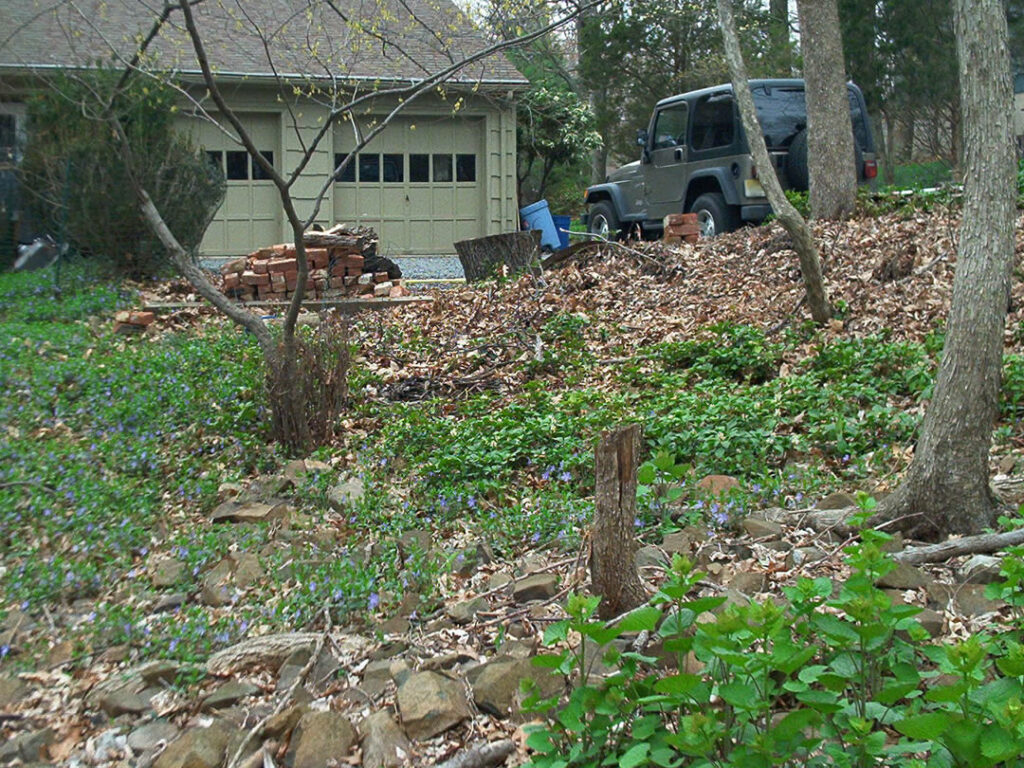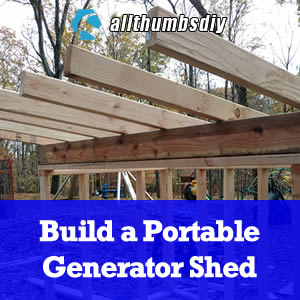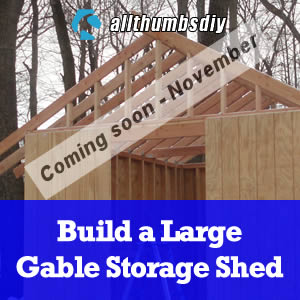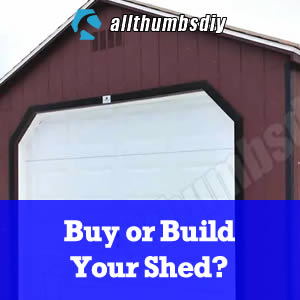My garage doors face the rear of the house and I have a long and somewhat narrow gravel driveway to get to them. In addition, my backyard is littered with rocks, boulders and shales, all contributing to an uneven terrain hat is difficult to navigate. To boot, I have copperhead snakes so there is that.

Even if you are working with a limited backyard space, I highly encourage you the consider the following factors when finding the right spot for your shed.
Determine Your Shed’s Functionality
When setting up your shed, you shouldn’t just plop it on any available space without a careful thought.
Rather, it’s essential to consider its primary purpose. For instance, if you’re storing winter equipment like a snow blower, ensuring quick access when there is a 2 feet of snow is vital. My John Deere 1330SE snow blower is a beast (it’s large and heavy) so situating it at an easily accessible location can streamline chores. If possible, you should anticipate a large space for the ramp to allow easy access for such heavy machinery.
During COVID, I know a lot of my friends created a personal workspace using their “office shed” so it was very important to locate it on a spot away from noise (i.e. road traffic, air conditioners, away from other sheds storing gasoline, etc.) as well as placing it near the electricity source.
On the other hand, if your vision is a craftsman’s retreat, it’s paramount to think about the electrical necessities. Opting for a location closer to your home’s power source will facilitate your work.
If your intention is to storing bicycles or motorcycles, easy access should be a top priority due to their frequent use.
Evaluating Terrain and Environmental Factors
Water is the enemy to wood sheds so there are three things you should strive to achieve to ensure the longevity of your shed:
- Control moisture
- Sunlight exposure
- Ground separation
Control moisture
You want to avoid the following types of soil due their inherent ability to retain water/moisture: alluvium (found near water bodies), loam and sand (too loose), clary & marl (does not drain well).
Placing your shed in a high moisture retention area will encourage mold and mildew growth and will speed up the decaying process.
Sunlight exposure
Although direct sunlight can be detrimental to plastic and wood surfaces that are unpainted, the sun’s UV rays will kill mold and mildew, and speed up the drying process.
You can gauge the sun paths across seasons for your house using SunCal here.
Ground Separation
If you are stuck with poor draining soil, you either need to find an elevated spot (i.e. higher ground) or create an artificial elevation to create space between ground and the structure.
Most common method of creating space is using 4×4 as skids but in I prefer to use 6×6 lumber then rest the floor foundation on top of them.
The primary reason for this space is to promote plenty of air movement so that after heavy rain, the air will dry out the ground below.
Zoning and Building Codes
Read my post, “Do I need a Permit When Building a Shed” to understand important factors like:
- Securing Permits: Before embarking on your project, delve into the requirements of local building permits. While jurisdictions vary, some might necessitate a permit exclusively for sheds with a fixed foundation.
- Understanding Setbacks: Setbacks dictate the allowable distance between structures and property perimeters. Acquainting yourself with municipal regulations can stave off unforeseen complications in the future.
- Establishing Fence Distance: The height and size of your shed might influence its required separation from fencing.
- Maintaining Safe Distances from Existing Structures: Delve into local ordinances regarding the proximity of new structures to existing ones. Often, a ten-foot gap is standard, but there can be exceptions.
- Covered vs Uncovered Yard Usage: Certain municipalities impose restrictions on the cumulative area that structures can occupy in your backyard. Be diligent to ensure your shed adheres to these guidelines.
- Liaising with Homeowners Associations (HOAs): If you reside within an HOA jurisdiction, it’s crucial to align with their stipulations. HOAs often have stringent criteria, and non-compliance might lead to legal repercussions.
Key Takeaways
Choosing the optimal location for a shed goes beyond simple aesthetics; it’s an intricate balance of understanding topography, zoning laws, function, and design. The terrain, from the soil type to natural elements, plays a pivotal role in ensuring the longevity and stability of your structure. It’s crucial to factor in considerations like drainage, sunlight exposure, and possible future landscape changes.
Moreover, adherence to municipal guidelines and understanding property boundaries not only keeps you compliant but can also safeguard against future disputes or costly modifications. The size and purpose of your shed should also shape its location. Whether you’re aiming for a quiet office nook, a functional workshop, or a simple storage space, accessibility is key. A shed that’s easy to approach in all seasons, considering everything from snow accumulation to rainwater runoff, will prove its worth many times over.
Lastly, while functionality is paramount, the aesthetic integration of the shed into your property can’t be understated. A well-placed and tastefully designed shed doesn’t just cater to your needs; it can enhance the overall property value, becoming an asset in its own right. After all, home improvements are not just about immediate needs, but also about long-term benefits, both tangible and intangible.
After building three sheds, I learned that the journey of positioning a shed requires provides a lesson in holistic thinking, blending the practical with the aesthetic views.






